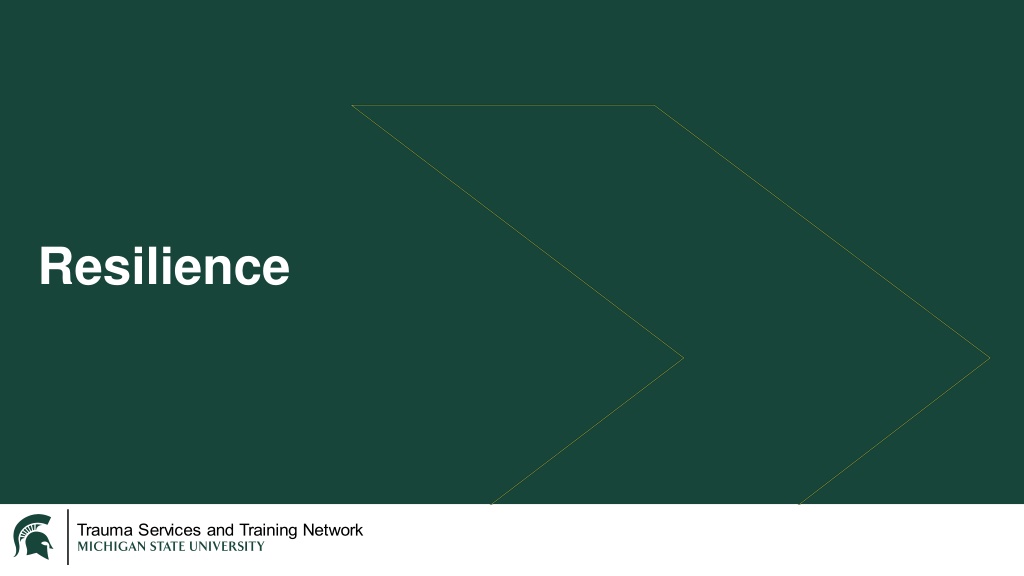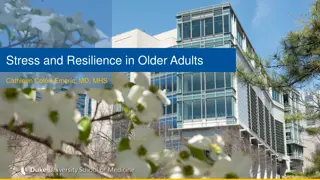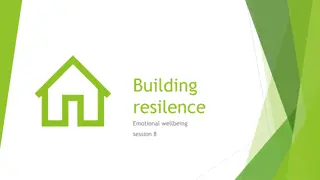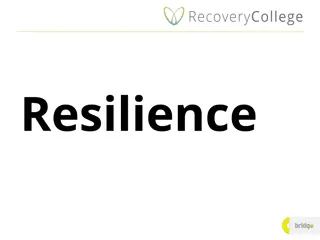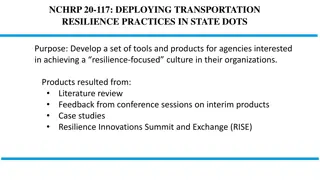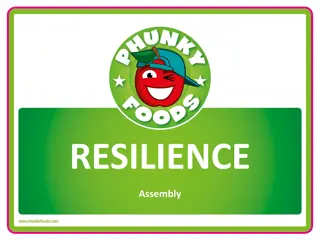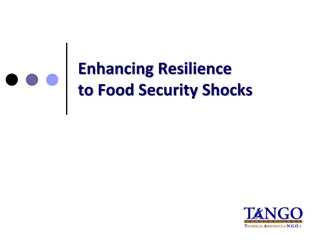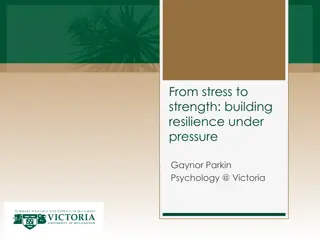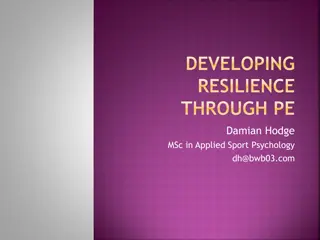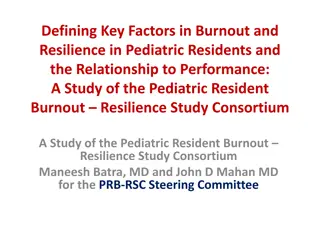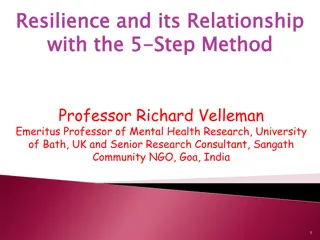Understanding Resilience: Factors and Strategies for Overcoming Adversity
Explore the concept of resilience and why some individuals develop trauma while others do not from the same event. Learn about protective factors, risk factors, and stages of life that influence resilience. Discover how coping flexibility, social networks, and social and emotional learning contribute to building resilience in the face of challenges.
Download Presentation

Please find below an Image/Link to download the presentation.
The content on the website is provided AS IS for your information and personal use only. It may not be sold, licensed, or shared on other websites without obtaining consent from the author. Download presentation by click this link. If you encounter any issues during the download, it is possible that the publisher has removed the file from their server.
E N D
Presentation Transcript
Resilience WHY DO SOME PEOPLE DEVELOP TRAUMA FROM THE SAME EVENT THAT OTHERS DO NOT?
Resilience WHAT DETERMINES WHERE I FALL ON THE CURVE? Protective Factors Risk Factors
Resilience RISK FACTORS VS. PROTECTIVE FACTORS Risk Factors Protective Factors History of mental health conditions Having a mentor/role model Having few friends or relationships with family Having positive friendships Growing up in abusive or neglectful environments Belief that others care about you Being able to talk about trauma with supportive people Community violence
Protective Factors STAGES OF LIFE Middle Childhood Ability to make friends and good peer relationships Extended family support Mastery of academic skills School engagement, positive teacher expectations and effective classroom management, partnering between school and family Adolescence Engagement and Connection in two or more contexts: School, peers, athletics, employment, religion, culture Presence of mentors and support for development of skills and interests Infancy/Early Childhood Mastery communication & language skills Reliable and responsive caregivers, access to high quality childcare Adequate socioeconomic resources for family Early Adulthood Opportunities for exploration in work and school Future oriented Achievement oriented Connectedness to adults outside of family Institute of Medicine, US DHHS
Resilience PROMOTING RESILIENCE Coping flexibility Social networks Social and emotional learning
Resilience CONTRIBUTORS TO RESILIENCE Coping Flexibility moving between actively processing the event and using adaptive behaviors to distract themselves, remain optimistic, and focus on moving past the event Social Networks Major protective factor Social and Emotional Learning Can be learned at any age. Occurs in environment of belonging, perseverance, and self-regulation
